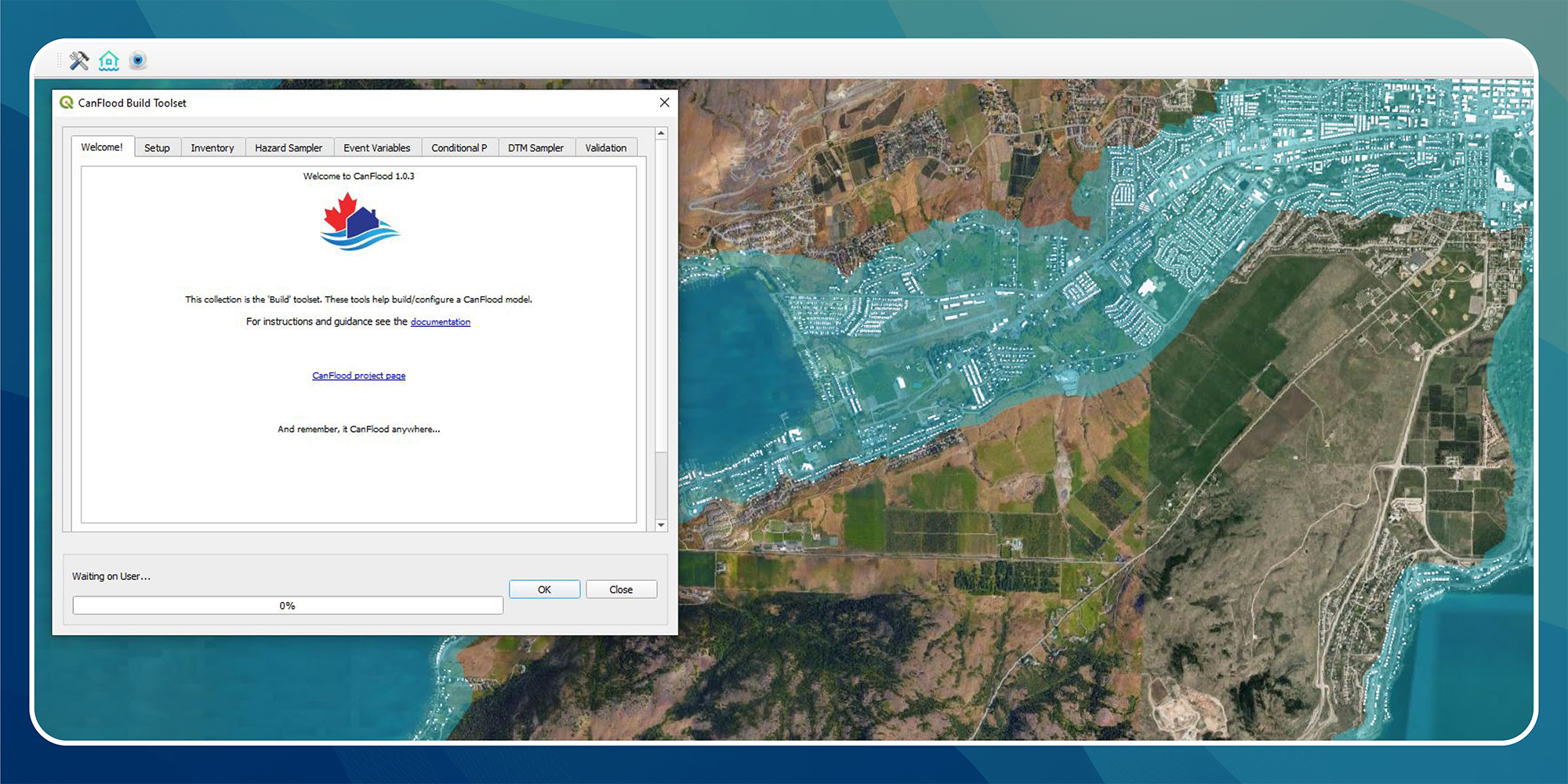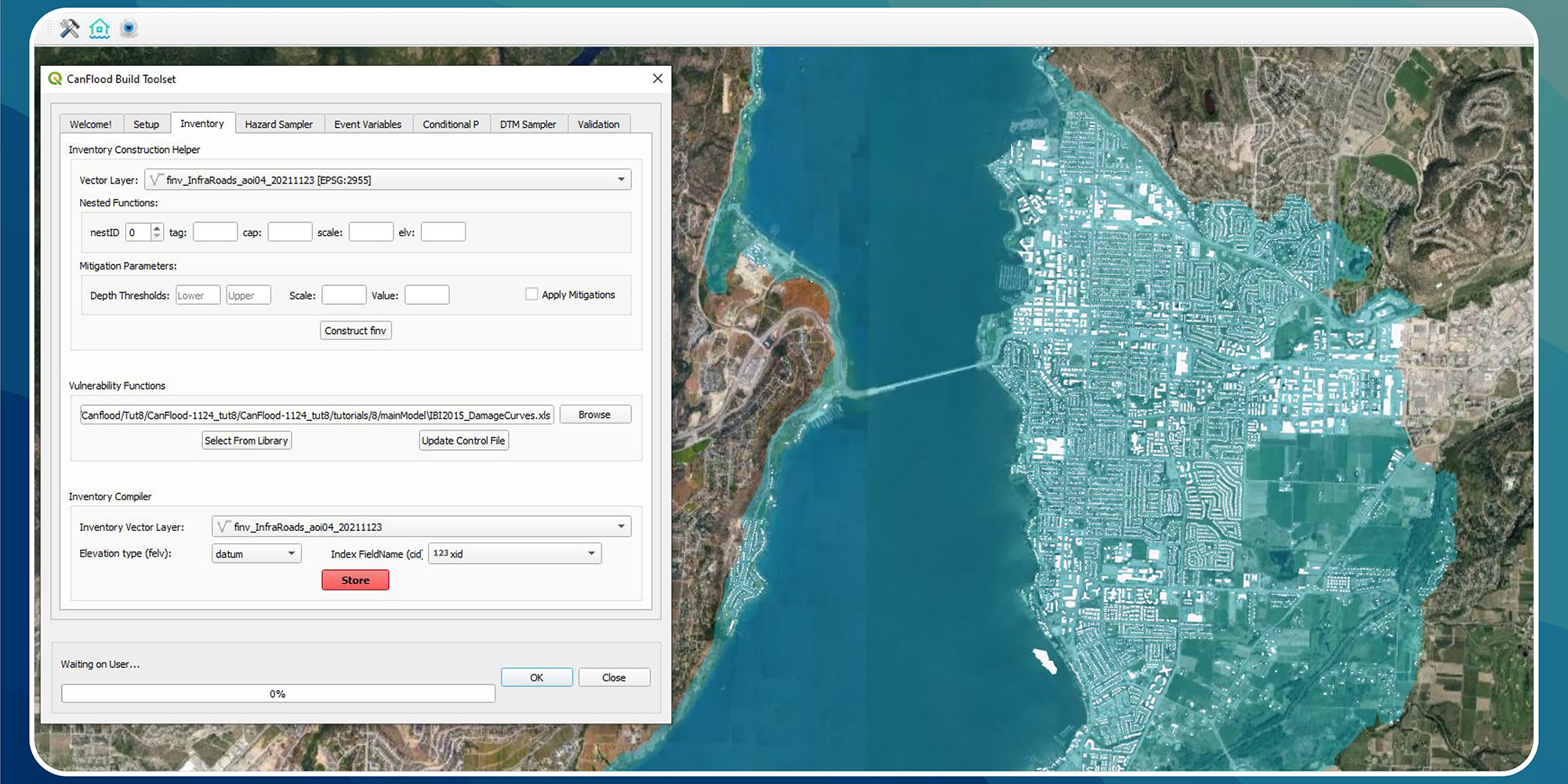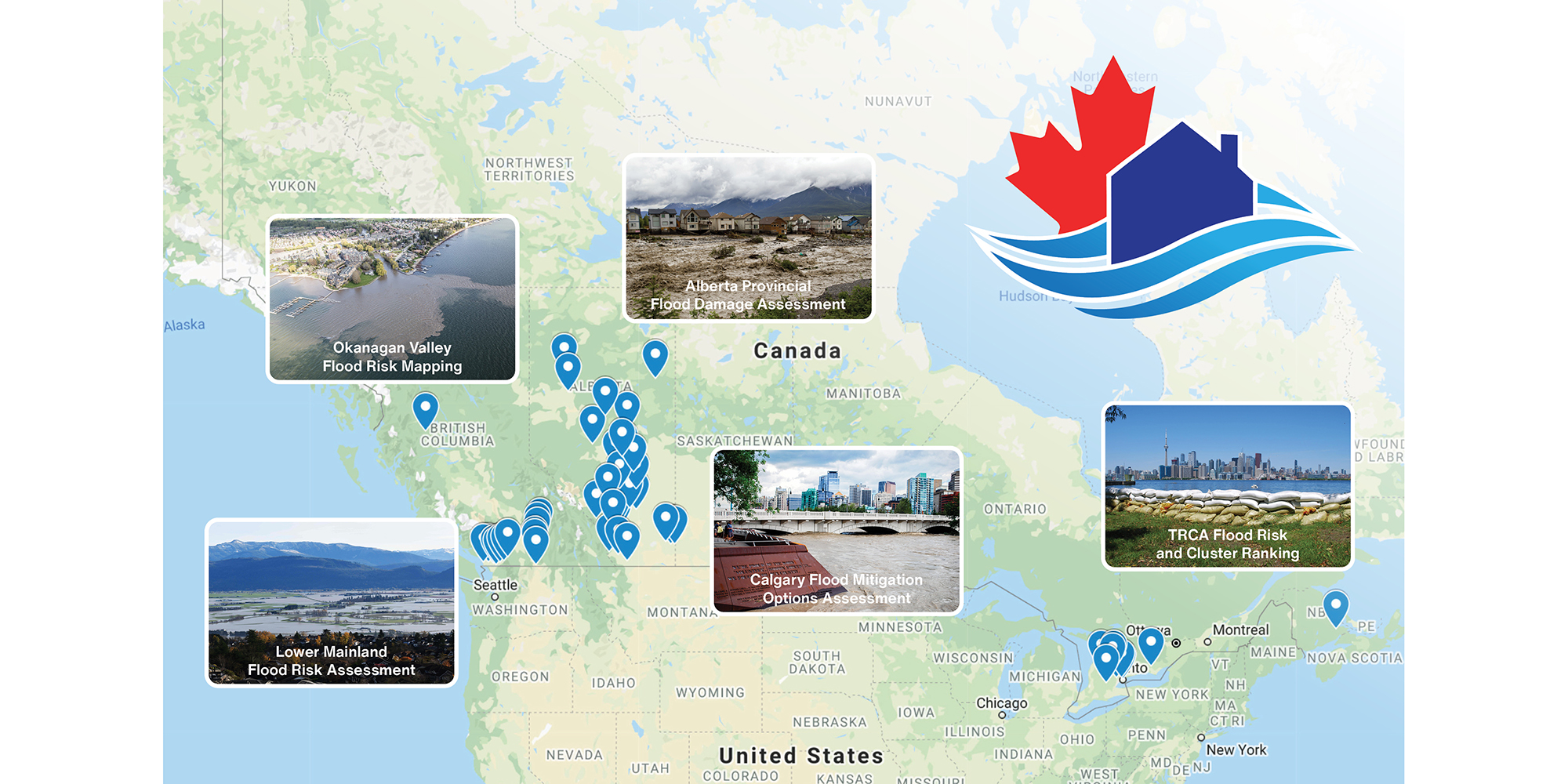CanFlood Risk Modelling Platform
Understanding and mitigating flood risk is a central element of climate adaptation. IBI Group developed CanFlood, an open-source toolkit for flood risk modelling, for Natural Resources Canada as the nationwide standard for assessing local flood risk.
Client
Natural Resources CanadaLocation
Canada, North America


An essential toolkit to map flood risk in Canada’s changing climate
Floods are the greatest natural risk to our communities, and flood risk is evolving in our changing climate. To guide development in a way that reduces the impacts of flooding on communities, decision makers need tools that allow them to model existing flood risk and future plans with accuracy and nuance.
IBI Group developed innovative risk modelling tools to meet this need and support our work as a leading provider of local flood risk assessments. Natural Resources Canada recognized this leadership and together we developed CanFlood to be the official tool for flood risk mapping nationwide.
CanFlood allows users to gain sophisticated insight into different aspects of flood risk through spatial modelling of a variety of risk factors. CanFlood accounts for the three elements of risk, including hazard (the extent and likelihood of flooding), exposure (who or what could be harmed in a given location), and vulnerability to damage.
CanFlood is accessible to all for free online, either through the software development platform GitHub, or as a plug-in, or add-on, to QGIS software, a free, open-source mapping program. As an open-source toolkit, CanFlood is creating a community of practitioners, researchers and planners, strengthening Canada’s ability to meet the challenges of adaptation and development in a changing climate.
Following CanFlood’s adoption as a new federal standard, CanFlood has been used for adaptation planning across Canada, from large regional risk assessments to small arctic communities. Our multidisciplinary CanFlood team has been invited to present at several national conferences, including those of the Canadian Institute of Planners and the Canadian Water Resources Association.



